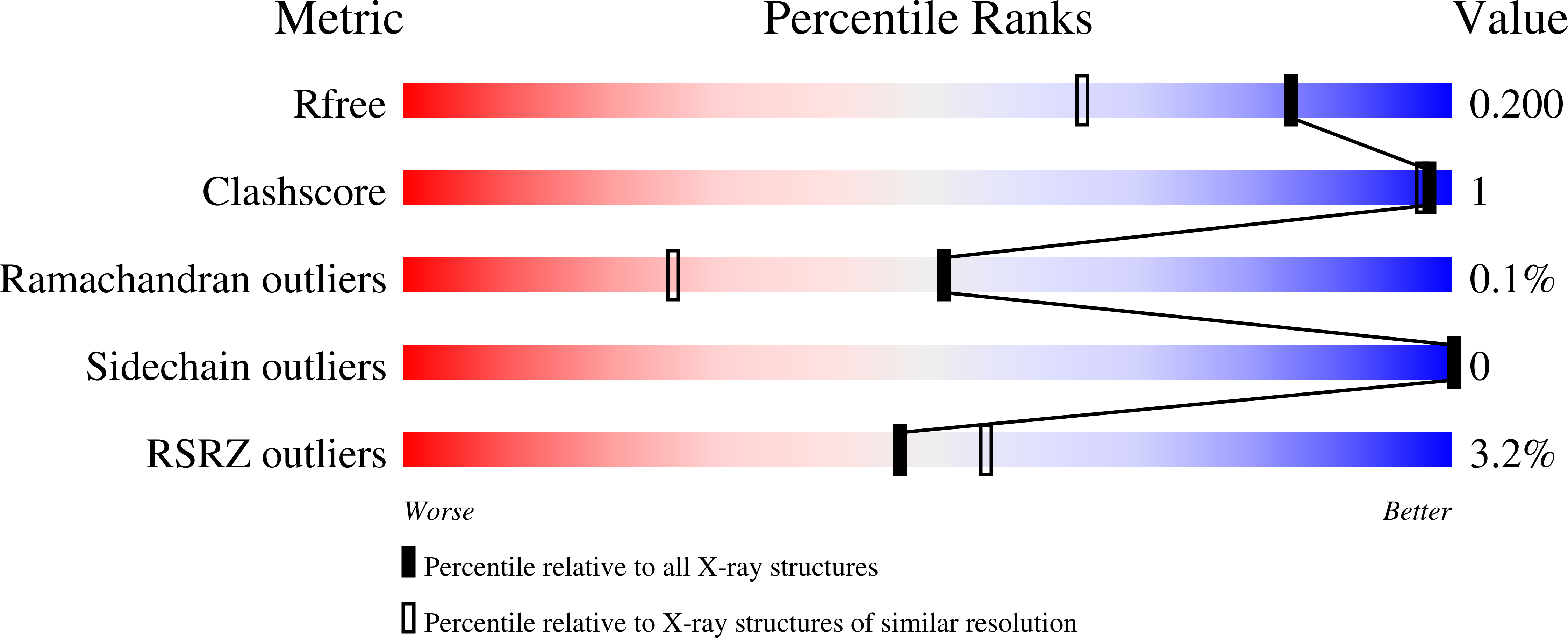The modular structure of haemagglutinin/adhesin regions in gingipains of Porphyromonas gingivalis.
Li, N., Yun, P., Jeffries, C.M., Langley, D., Gamsjaeger, R., Church, W.B., Hunter, N., Collyer, C.A.(2011) Mol Microbiol 81: 1358-1373
- PubMed: 21812842
- DOI: https://doi.org/10.1111/j.1365-2958.2011.07768.x
- Primary Citation of Related Structures:
3M1H - PubMed Abstract:
High-molecular-weight arginine- and lysine-specific (Kgp) gingipains are essential virulence factors expressed by the oral pathogen Porphyromonas gingivalis. Haemagglutinin/adhesin (HA) regions of these proteases have been implicated in targeting catalytic domains to biological substrates and in other adhesive functions. We now report the crystal structure of the K3 adhesin domain/module of Kgp, which folds into the distinct β-jelly roll sandwich topology previously observed for K2. A conserved structural feature of K3, previously observed in the Kgp K2 module, is the half-way point anchoring of the surface exposed loops via an arginine residue found in otherwise highly variable sequences. Small-angle X-ray scattering data for the recombinant construct K1K2K3 confirmed a structure comprising a tandem repeat of three homologous modules, K1, K2 and K3 while also indicating an unusual 'y'-shape arrangement of the modules connected by variable linker sequences. Only the K2 and K3 modules and a K1K2 construct were observed to be potently haemolytic. K2, K3 and the K1K2 construct showed preferential recognition of haem-albumin over albumin whereas only low affinity binding was detected for K1 and the K1K2K3 construct. The data indicate replication of some biological functions over the three adhesin domains of Kgp while other functions are restricted.
Organizational Affiliation:
School of Molecular Bioscience, The University of Sydney, NSW, Australia.























